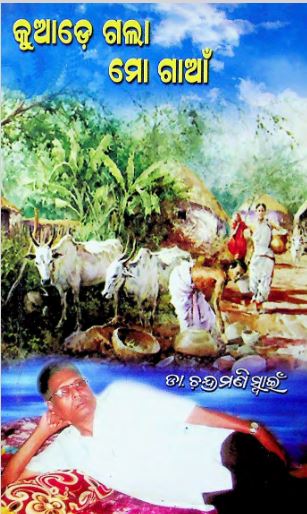Kuade Gala Mo Gan, a poignant collection of poems by Chandramani Swain, was published in 2011 and stands as a significant contribution to Odia literature. This work encapsulates the essence of rural life, cultural heritage, and the profound connection between the individual and their roots. Swain’s eloquent verses transport readers to the heart of Odisha’s villages, vividly portraying their struggles, joys, and the rich tapestry of daily life.
Among the various themes explored in this collection, the sub-poem “Village Life” poignantly captures the spirit and vibrancy of village existence. In “Village Life,” Swain intricately weaves together imagery and emotions that reflect the simplicity and depth of rural living.
Swain employs striking visual descriptions to bring the reader into the village setting. From lush green fields and swaying crops to bustling markets and serene mornings, the poet paints a picture that is both nostalgic and vibrant. The sensory details create a strong connection with the landscape, making readers feel as if they are walking through the village with him.
The poem highlights the unique cultural practices of village life, including traditional festivals, rituals, and communal gatherings. Swain celebrates the warmth of human connections, showcasing how life in the village is woven together by shared customs, cooperation, and a sense of belonging. The themes of kinship and community resonate deeply, reflecting the author’s admiration for these values.
While “Village Life” paints a beautiful picture of rural existence, it does not shy away from addressing the challenges faced by villagers. Swain poignantly captures the struggles with poverty, agriculture, and societal issues, portraying the resilience of the people who, despite difficulties, find joy and hope in their daily lives.
A recurring motif throughout the sub-poem is the deep connection between the villagers and the natural world. Swain beautifully illustrates how daily life is intertwined with the rhythms of nature—the changing seasons, the bounty of harvests, and the harmony found in working alongside the land. This relationship underscores the themes of sustainability and respect for the environment.
The poem evokes a sense of longing and nostalgia, inviting readers to reflect on the simplicity and beauty of village life. The emotional depth in Swain’s words resonates not just with those from rural backgrounds but with anyone who appreciates the values of love, connection, and community.
Kuade Gala Mo Gan and its sub-poem “Village Life” serve as a loving ode to the richness of Odia culture and the significance of village existence. Chandramani Swain’s work invites readers to celebrate the beauty, struggles, and joys inherent in rural life, igniting a sense of pride and appreciation for the cultural heritage of Odisha. This collection not only enriches the literary landscape but also fosters a deeper understanding of the values and traditions that form the backbone of rural communities. Through his eloquent expressions, Swain immortalizes the essence of village life for generations to come.
Books Info
| Books name | Kuade Gala Mo Gan |
| Author | Chandramani Swain |
| No Of pages | 98 |
| Publisher | Shilapadma |
| Publication | 2011 |
| Printed At | Basanti Offsets |
| Distributor | NA |

